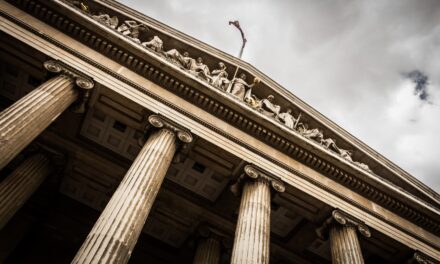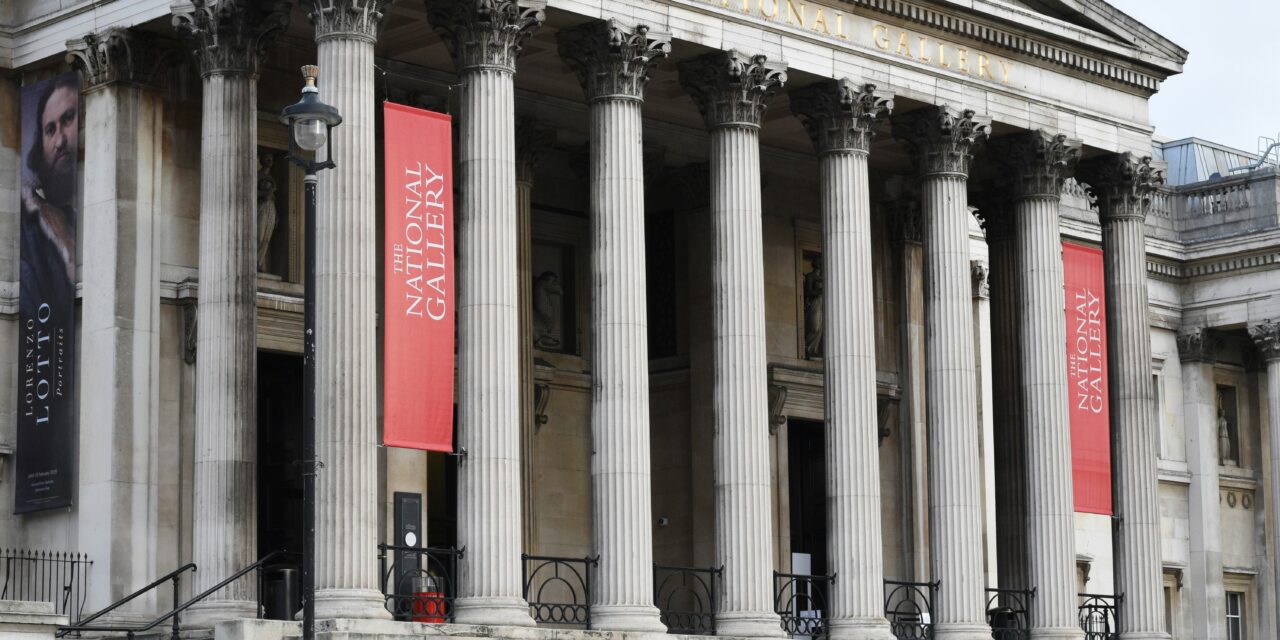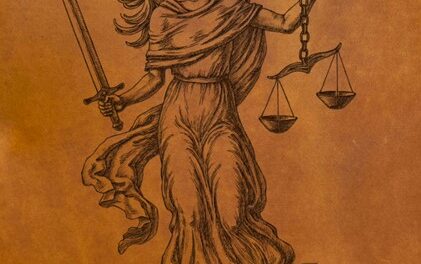The British Museum has faced a lot of criticism regarding their collection and their refusal to return objects
to their country of origin. [1]
One particular piece in the collection has been the subject of many debates, the Parthenon Marbles from Greece. Greece has asked for the return of this object for decades. [2] There was even a possibility that it would become part of the Brexit negotiations between Britain and the EU. [3]
The debate and Greek campaign for the return of the Parthenon Marbles continues until today. On the 16th of November 2023, George Osborne, chair of the British Museum, released a statement about the return of the pieces and a possible agreement with Greece, which suggests a loan based deal.
This raises the question, what kind of approach does the British Museum take regarding their collection and the Parthenon marbles? And how should the loan-based deal be seen?
In this article, I will give background information about the Parthenon Marbles, and the proposed deal from Britain. After that, the approaches in international cultural heritage law will be described, and the view of the British Museum regarding the Parthenon marbles can be seen in these approaches. The article will end with some critical notes about this approach and the law keeping it in place.
What are the Parthenon Marbles? A short history
The Parthenon Marbles are 2,500 years old and consist of 17 sculptures that were once part of the Parthenon temple and made up half of the frieze. The Parthenon Temple is considered one of the world’s greatest cultural monuments and is found at the Acropolis in Athens. [4] The Marbles hold great cultural value. Some authors describe them as artistic excellence, and the fruit of democracy, and Western civilization.
The Parthenon Marbles came to Britain through Lord Elgin in the early 19th century, the British ambassador of the Ottoman Empire, which ruled over Greece at the time. [5] Thus, the Marbles are also referred to as the Elgin Marbles. Lord Elgin gained access to the Acropolis because he claimed to make casts of the sculptures on the frieze and take stones that had fallen to the ground. This was authorized in a letter by a Turkish official. He didn’t receive authorization to saw off the frieze and transfer the sculptures. Only the sultan could at that time authorize such acts, no documentation has been found to prove this. Lord Elgin suffered bankruptcy and sold his collection to the UK government in 1816. The Parliament never investigated the actions of Lord Elgin. In 1816, the marbles were transferred to the trustees of the British Museum. Britain promised to return them once Greece was independent, but this never happened. [6]
The agreement suggested by Britain
Chair of the British Museum, George Osbourne, has stated that he hopes a deal will be made between Greece and Britain regarding the Parthenon Marbles. In his speech, he mentioned some aspects of what this deal could contain:
‘’An agreement that enables these great sculptures to be seen in Athens, as well as London. An agreement that allows other treasures from Greece, some that have never left those shores, to be seen here at the British Museum. As trustees we look for a partnership with our Greek friends that requires no one to relinquish their claims, asks for no changes to laws which are not ours to write, but which finds a practical, pragmatic and rational way forward.”
The statement doesn’t mention anything about the permanent return of the artifacts, it mentions how the Marbles will be seen in both countries. Which suggests a loan-based deal. A loan-based deal where Greece will provide objects in return. No change will be made regarding the status of the property of the Parthenon
Marbles. [7]
The approaches to international cultural property law
In international cultural property law, there are two main approaches to cultural property: the internationalist approach and the nationalist approach. These approaches were first established by John Merryman. The nationalist approach to cultural property sees cultural property as a national object, regardless of its location or owner. It calls for the repatriation of objects to their country of origin. The internationalist approach sees cultural property as belonging to common human culture. [8] The cultural nationalist approach is presented in the Convention on the Means of Prohibiting and Preventing the Illicit Import, Export and Transfer of Ownership of Cultural Property. The cultural internationalist approach is seen in the 1954 Convention for Protection of Cultural Property in the Event of Armed Conflict. [9]
Organization of the British Museum and the British Law
The British Museum is organized as a corporation, which is governed by a Board of Trustees. The Board is statutorily required to serve the public and consists of 25 people. The trustees are appointed by the crown, Secretary of State, or by the trustees themselves. [10] The British Museum aims to have a collection representative of world cultures and makes sure that the collection is protected, conserved, curated, exhibited and researched. [11]
The structure of the British Museum and the laws regarding it were designed after the Last Will and Testament of Sir Sloane, whose collection was the basis of the British Museum. In his Last Will and Testament, he offered his collection to Parliament in exchange for money with the conditions that a Board of Trustees would be established that oversaw the collection and that the collection would be kept together for accessibility for the public. Parliament accepted this and passed the British Museum Act of 1753, which established the Museum and its Trustee structure. The Board of Trustees chose ‘for the devotees of humane pursuits’ as their mission statement. It made Sir Sloane’s will into law. This means that the Board of Trustees are legally bound to protect the collection under fiduciary duty principles and British law. The British Museum Act of 1753 was later replaced by the British Museum Act of 1963, which is still in effect today and gives the circumstances under which the trustees can dispose of an item under Section 5 . [12]
Disposal can happen when there is a duplicate or if it is produced after 1850 of printed matter and the trustees have a copy. Another circumstance is that the object “unfit” and is a “detriment to the interests of students. [13]
The cultural property approach of the British Museum and the suggested agreement
The general approach to cultural property of the British Museum is an internationalist approach. They claim to hold items for protection and educational purposes of all humankind. This can be seen in the mission statement of the British Museum and the way the museum is organized through its trustee structure, which protects this mission. The way the Parthenon Marbles are handled is no different. The British Museum claims to hold the Parthenon Marbles because they are of great cultural value and are an important part of history, and their place in the museums allows them to be examined the best by the public, both in the free-of-charge museum and through the loan network, which makes them part of a world shared heritage and collection.
The museum views a return to the Parthenon as unsafe for the sculptures, and although they acknowledge the ability of the Greek museums to protect them, they argue that the sculptures are more beneficial to the public when they remain in the British Museum because they can be enjoyed in the museum’s context of
the world collection. [14] The way they view the Parthenon Marbles as part of their collection doesn’t differ from their general internationalist approach.
The suggested agreement by the chair of the British Museum is in line with the previous view of the Museum. Through a loan structure, the British Museum doesn’t have to lose objects from its collection and can make sure that more people can see them. Which in return allows them to show other Greek cultural
properties in London as part of the world‘s shared cultural heritage.
In this suggested agreement, the chair explicitly mentions that the agreement doesn’t change anything about the current claims that any of the countries have or the laws. Not departing from the internationalist cultural property approach.
Critical notes on the approach of the British Museum
In the last decades,much has been said about the Parthenon Marbles, and Britain has faced a lot of criticism regarding them. The origin and the way the Parthenon Marbles were acquired by the British Museum were already highly controversial, as the British Museum claims to have acquired them through
legitimate means, while other authors claim there has never been any evidence of this. The British Museum has an internationalist cultural property approach which is kept in place through the British laws and structure of the Museum.
In the newly suggested agreement, the British Museum does not depart from its former internationalist approach. A lot of critical notes can be made about this agreement as well as the approach the British Museum takes.
One could say that the marbles would have greater public benefit if they are exhibited in their own cultural context in Greece instead of the context of the world collection of the British Museum. It is also arguable if the claim from the British Museum holds up today. Can the British Museum claim that they hold their
collection to make it as accessible to the public as possible? When the objects in the Museum can only be displayed in one place. And does the accessibility and educational context in a balance of interest outweigh the cultural importance to Greece and other cultures?
The British Museum Act prevents the Museum from returning the objects on its own and keeps this internationalist cultural property approach in place. The museum can’t repatriate cultural property unless Parliament changes the Board of Trustees legal obligation. [15] Under this law, the only agreement that can be
made is an unsatisfying loan-based deal. A loan- based agreement is very unlikely to happen, as the prime minister of Greece described the Parthenon Marbles in the British Museum as ‘cutting Mona Lisa in half’.’ [16]
The collection of the British Museum is protected by a very strong legal framework which is both embedded in the Museum's structures and the British laws. The Parthenon Marbles stay locked in place unless the political will in Britain changes in favor of laws in the context of the nationalist cultural property approach.
1 Siddique, H. (2018) ‘not everything was looted’: British Museum to Fight CriticsHaroon Siddique, The Guardian. Available at: https://www.theguardian.com/culture/2018/oct/12/collected-histories-not-everything-was-looted-british-
museum-defends-collections (Accessed: 17 December 2023).
2 Lorizzo, E. (2023) George Osborne gives major update on deal with Greece over Elgin Marbles, The Independent. Available at: https://www.independent.co.uk/news/science/archaeology/elgin-marbles-greece-parthenon-british-museum-
b2448266.html (Accessed: 17 December 2023).
3 Lewis, S. (2020) Greece may demand Britain give back ancient Parthenon Marbles as part of Brexit deal, CBS News. Available at: https://www.cbsnews.com/news/brexit-greece-britain-return-parthenon-elgin-marbles-trade-deal/ (Accessed: 17 December 2023).
4 Sale, I. (2023) Elgin marbles: What are they and how did they end up in the British Museum?, Sky News. Available at: https://news.sky.com/story/elgin-marbles-what-are-they-and-how-did-they-end-up-in-the-british-museum-12779617
(Accessed: 17 December 2023).
5 Stamatoudi, I. (2022) ‘The Parthenon Marbles Case: Background and the Arguments of Greece and the UK’, Cardozo Arts & Ent LJ , 41, pp. 105.
6 Ibid. 108
7 Lorizzo, E. (2023) George Osborne gives major update on deal with Greece over Elgin Marbles, The Independent. Available at: https://www.independent.co.uk/news/science/archaeology/elgin-marbles-greece-parthenon-british-museum-
b2448266.html (Accessed: 17 December 2023).
8 Merryman, J.H. (1986) ‘Two ways of thinking about cultural property’, American Journal of International Law, 80(4), pp. 831–853. doi:10.2307/2202065.
9 Roehrenbeck, C.A. (2010) ‘Repatriation of cultural property–who owns the past? an introduction to approaches and to selected Statutory Instruments’, International Journal of Legal Information, 38(2), pp.190 doi:10.1017/s0731126500005722.
10 Godwin, H.R. (2022) ‘Legal Complications of Repatriation at the British Museum’, Wash Int’l LJ, 30, p. 147.
11 Ibid.145
12 Ibid. 147.
13 British Museum Act 1963
14 Parthenon sculptures – The trustees’ statement (no date) The British Museum. Available at: https://www.britishmuseum.org/about-us/british-museum-story/contested-objects-collection/parthenon-sculptures/parthenon
(Accessed: 17 December 2023).








